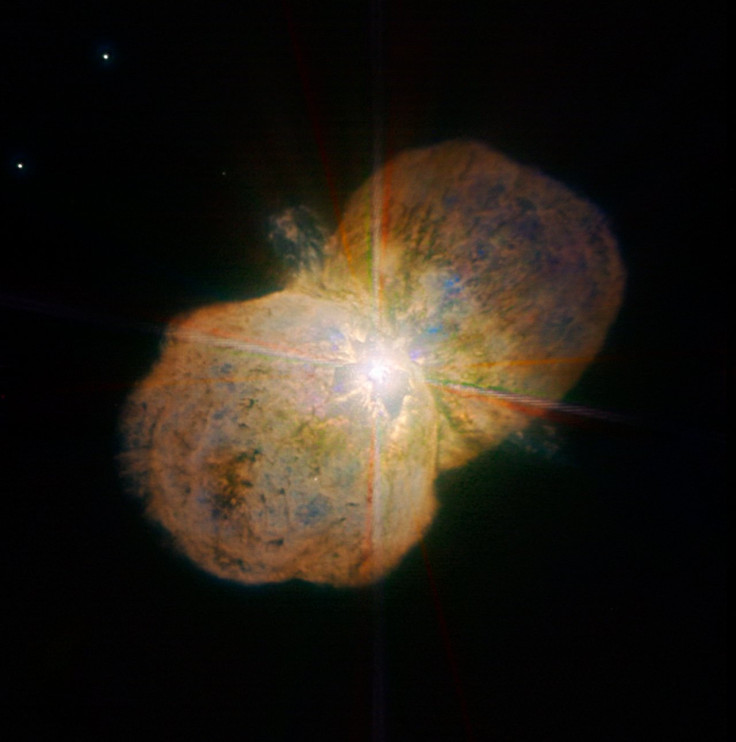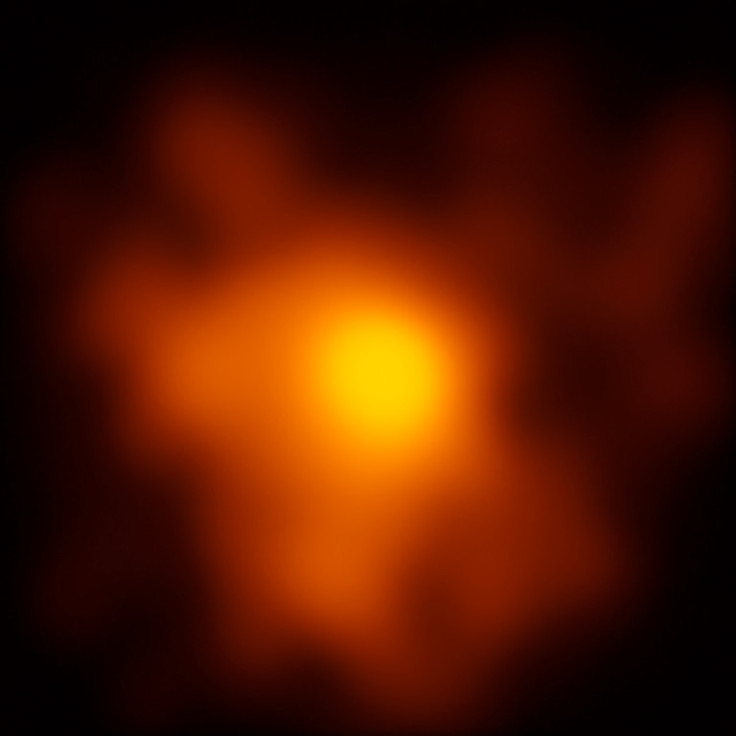Incredible images of Eta Carinae reveal death throes of Milky Way's monster star
Scientists record extreme stellar winds from stars in binary system smashing into each other.
The highest resolution image of Eta Carinae ever obtained is shedding light on how the binary system evolved – and how it will die. The image, for the first time, shows the extreme interstellar winds between the two stars, creating temperatures of millions of degrees and intense X-ray radiation.
Eta Carinae is a binary system in the Carina Nebula consisting of two massive stars on a collision course. It shines with a luminosity of around five million of our Suns and is surrounded by the Homunculus nebula, which contains material from the Great Eruption witnessed by astronomers in 1843.

The system has two stars – one weighing around 90 times the mass of the Sun and the other around 30 masses. However, the larger of the two is quickly losing mass through wind blowing away from its surface at a rate of more than a million miles per hour. The system is expected to produce at least one supernova explosion in the relatively near future.
Read more: Eta Carinae: Massive supernova could annihilate life on Earth, but it is extremely unlikely
Yet despite being one of the most massive and volatile binary systems in the Milky Way, scientists have been unable to study the zone between the two stars.
Using the ESO's Very Large Telescope Interferometer, an international team of scientists has now been able to produce the sharpest ever images of Eta Carinae and its colliding winds. Their study on the star system is published in the journal Astronomy & Astrophysics.

Astrophysicist Jose Groh, from Trinity College Dublin, said: "These are unprecedented images obtained with the ESO telescopes. We were able to zoom in and see the heavyweight champion in our galaxy like never before. The images provide us with a front-row view of how monster stars interact with each other. The heavier star is winning for now, but the faster companion star may change the fate of the system in the future."
The interferometer technique has allowed researchers to study the winds by using the light emitted by the hot gas they produce.

Findings showed a fan-shaped structure where the wind from the smaller, hotter star smashes into the denser wind from the larger star. The outflow of wind points to the end of Eta Carinae's life, so the latest images should help scientists understand how such stars evolve and die.
Study leader Gerd Weigelt said: "Our dreams came true because we can now get extremely sharp images in the infrared. The VLTI provides us with a unique opportunity to improve our physical understanding of Eta Carinae and many other key objects."
© Copyright IBTimes 2025. All rights reserved.






















